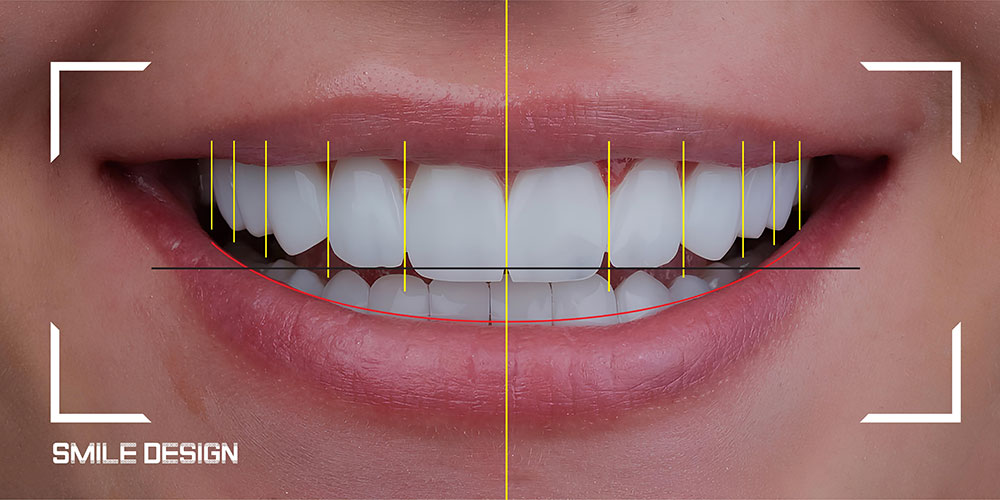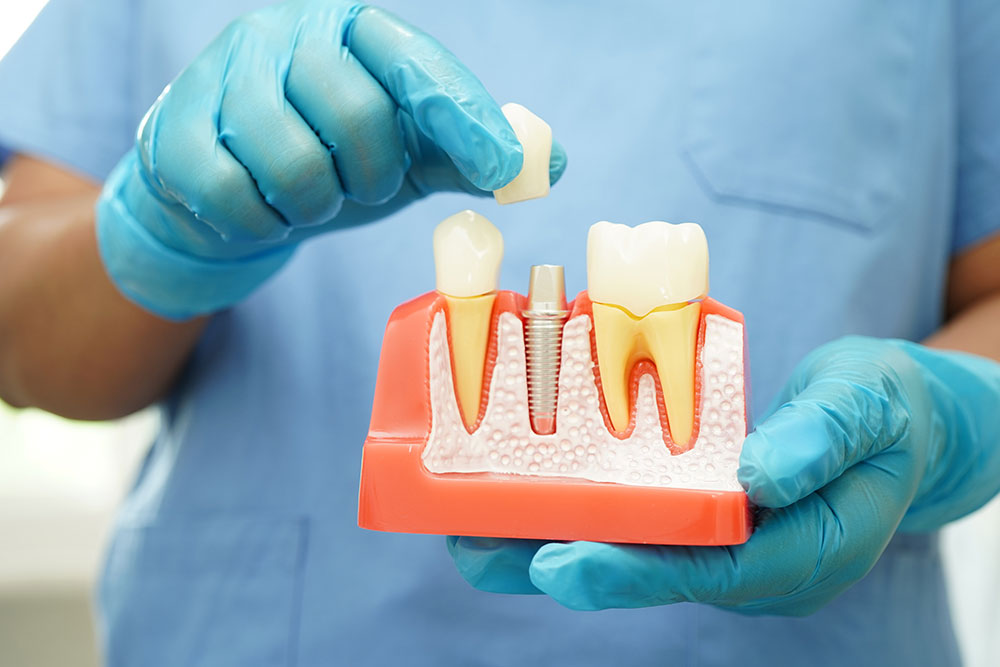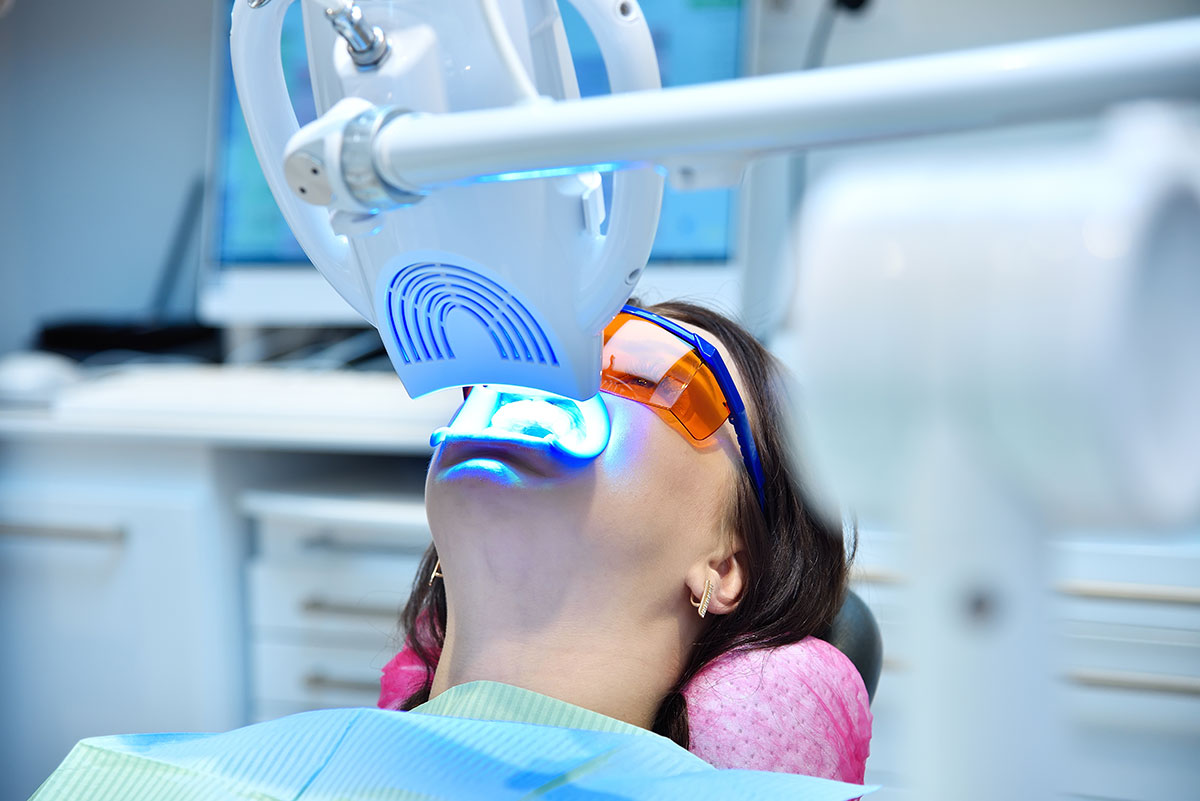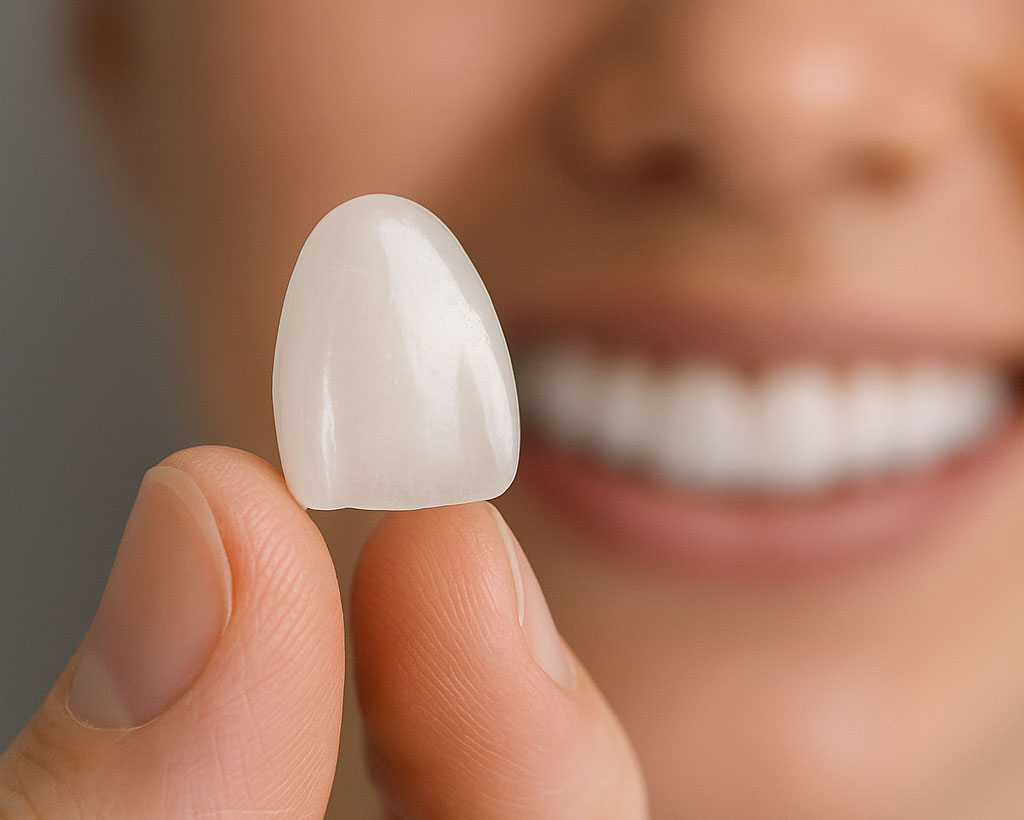Implant treatment, one of the most preferred methods among modern dentistry applications, offers a permanent and aesthetic solution to the problem of missing teeth. In this guide, we will discuss questions such as "What is an implant tooth?", "implant prices", "post-implant care" and every detail from the stages of implant treatment to its advantages, from factors affecting implant prices to post-operative care.
What is an implant and how does it work?
- What is an implant tooth?
An implant is an artificial tooth root in the form of a titanium screw placed in the jawbone. This screw fuses to the jawbone through a process called osseointegration; then provides support to the superstructure (prosthetic tooth, porcelain veneer, zirconium coating, etc.). Thanks to the implant, both chewing function is restored and dental aesthetics are perfected. - Structure and material of the implant
Titanium material is highly biocompatible and fuses seamlessly with the jawbone. In some cases, implant systems with alumina-oxide or zirconium substructure are also preferred. Porcelain, zirconium coating or hybrid (zirconium substructure + porcelain coating) is used as a superstructure. - Working principle of the implant
- In the surgical stage, the implant is placed.
- Osseointegration process starts (between 3-6 months).
- The abutment (spacer) is placed on top of the implant screw.
- A crown made of porcelain or zirconium is placed on the abutment.
As a result of these steps, a vivid and natural tooth appearance is obtained in the missing tooth area.
Who Can Have Implant Treatment? (Implant Indications)
- Generally suitable candidates
- Individuals over 18 years of age, who have completed their growth development
- Those with chewing difficulties due to tooth loss
- Those with aesthetic concerns (seeking "dental aesthetics")
- Patients who cannot use bridges or removable prostheses
- Those with sufficient jawbone volume (biologically sufficient bone)
- Risk factors and things to watch out for
- Uncontrolled diabetes, severe cases of osteoporosis
- Smoking (implant success is lower in smokers)
- Active periodontal (gum) infections
- Severe systemic diseases (heart disease, bleeding disorders, etc.)
- In case of insufficient bone tissue, "bone grafting" or "sinus lifting" may be necessary.
- Age restriction
Implant treatment can be performed in people who have completed their developmental age, i.e. in individuals aged 18 years and over. In elderly patients, the decision is made by evaluating bone density and general health status.
Implant Types and Systems
- One-piece (monophasic) implants
Surgical and prosthetic stages can be planned in a single session. Although it offers aesthetically fast solutions, it may not be suitable for every patient. - Two-part (biphasic) implants
- Surgical stage: The implant screw is inserted into the jawbone.
- Waiting period: The osseointegration process is completed.
- Prosthetic stage: The abutment is attached and the crown is placed over it.
They are the most widely preferred systems.
- Zirconium-based implant systems
With its metal-free structure, the risk of allergy is low. Thanks to their white color, "zirconium implant" and "zirconium tooth" are often preferred especially for the aesthetic area (front teeth). - Short implants
It can be used without the need for sinus lifting or bone grafting. It is suitable in cases without sufficient bone height. - Immediate loading (instant loading) implants
A temporary prosthesis can be inserted within 1-3 days after implant placement. It is a comfortable method for patients; however, the cases to be selected should be carefully evaluated.
Implant Stages and Treatment Process
Initial Examination and Planning
- Appointment & initial consultation:
- The dentist evaluates the jawbone structure with intraoral examination, panoramic x-rays (OPG), three-dimensional tomography (CBCT) and other imaging techniques.
- Patient history, systemic diseases, drug use information is obtained.
- Create a treatment plan:
- The number and position of teeth to be replaced by the implant is determined.
- If necessary, bone grafting or sinus lifting procedures are planned.
- The type of prosthesis (porcelain or zirconium, fixed bridge or removable prosthesis) is decided.
- The estimated cost ("implant prices") and the number of sessions are shared with the patient.
Surgical Stage Implant Placement
- Local or sedation anesthesia: The operation is performed under local anesthesia; sometimes sedation may be preferred depending on the situation.
- Placement of the implant screw:
- The surgeon drills a pilot hole in the jawbone and inserts an implant screw of the appropriate diameter.
- The dentist performs the surgical phase of the implant more precisely with digital guides (surgical guide).
- Stitching and healing process:
- The operation is completed with stitches sewn to the surgical site.
- Stitches are removed in 7-10 days.
- It is natural to have swelling and mild pain in the first 48 hours; cold compresses and painkillers are used as prescribed by the doctor.
Osseointegration Healing and Waiting Period
- Waiting time: It takes approximately 3-6 months; fusion of the jawbone with the implant screw takes place at this stage.
- Controls:
- An examination appointment is scheduled once a month.
- The dentist evaluates the healing, and if there is no sign of infection, gum health is monitored.
- The keyword "emergency dental care" is important for patients recognizing the risk of infection that needs to be taken care of during this period.
Prosthetic Phase Abutment and Crown Placement
- Abutment attachment: In the second stage, a spacer called "abutment" is attached to the implant.
- Impression (measurement) taking:
- Precise measurements are taken on the abutment.
- Porcelain, zirconium or hybrid crowns are prepared in the laboratory.
- "implant tooth prices" become clear at this stage; it varies according to the choice of material and the quality of the laboratory.
- Placement of the crown (zirconium, porcelain):
- If a temporary crown is to be fitted, wait 1-2 weeks and then glue or screw in the permanent crown.
- In terms of permanence, abutment with titanium substructure and porcelain coating is frequently used.
- In aesthetic demands, "zirconium veneer" or "zirconium tooth" is preferred; the white color of zirconium prioritizes aesthetics.
Advantages and Disadvantages of Implant Treatment
Advantages
- Natural Appearance and Comfort
- The implant is aesthetically superior because it provides the closest structure to the natural tooth root.
- There is no prosthesis slippage or jamming while eating or talking.
- Preventing Bone Loss
- After tooth loss, resorption (bone resorption) occurs in the jawbone. The implant prevents bone loss by giving load to the bone tissue.
- Long Lasting and Permanent Solution
- With proper care, it can be used for 20-25 years or even a lifetime.
- It is an ideal treatment option for patients seeking "dental aesthetics" and "permanent tooth solution".
- No Intervention on Peripheral Teeth
- Treatment is performed without cutting the neighboring teeth and without damaging the support teeth.
- Unlike bridge treatment, it offers a seamless application.
- High Success Rate
- Günümüzde başarılı implant oranı %95’lerin üzerindedir.
- In suitable defects, the advantage of "immediate implant loading" allows for a temporary prosthetic restoration within a few days.
Disadvantages
- High Cost
- "Implant prices" are naturally higher than for bridges or removable prostheses.
- The brand of implant used, infrastructure (titanium or zirconium), laboratory quality, additional intervention to the jawbone (bone grafting, sinus lifting) increase the cost.
- Need for Surgical Intervention
- The surgical procedure is performed under local anesthesia, which may be a disadvantage for patients who are afraid of surgery or who are not suitable for anesthesia.
- Temporary discomforts such as swelling, pain and bruising may be experienced after the operation.
- Long Treatment Duration
- The osseointegration process (3-6 months) requires waiting; although "immediate loading implant" is preferred if immediate prosthesis is desired, it is not suitable for all cases.
- Risk of Infection
- Without proper hygiene and care, periimplantitis (implant gingivitis) can occur.
- To avoid the risk of "implant inflammation" or "implant infection", regular post-implant check-ups reduce the need for "emergency dental care".
Factors Affecting Implant Prices
- Brand and Quality of Implant Used
- Prestigious brands such as Nobel Biocare, Straumann, Zimmer, BioHorizons increase the cost.
- Domestically produced brands may be more affordable.
- Surgical Procedure Difficulty and Additional Procedures
- Additional operations such as bone grafting, sinus lifting, bone augmentation bring additional costs.
- Superstructure (Porcelain, Zirconium, Hybrid)
- Simple metal-supported porcelain crowns may be more economical than zirconia.
- "Zirconium coating prices" are generally higher than porcelain.
- Expertise and Experience of the Physician
- Physicians with a specialty in periodontology, oral surgery or prosthetics may have higher service fees than general practitioners.
- Such specialists use advanced techniques that minimize complications.
- Pre-Consultation and Planning with the Dentist
- Initial examination, radiological examinations (CBCT, panoramic X-ray) may be reflected as an additional fee item.
- Measurements taken during the planning phase and the use of a digital surgical guide may also create extra costs.
Post-Operative Care and Regular Checks
First 48 Hours and First Week
- Cold Application and Rest
- Swelling is reduced with ice compress for the first 24-48 hours.
- Heavy physical activities should be limited and rest should be taken.
- Pain Management
- Painkillers (NSAIDS, paracetamol, etc.) recommended by the physician should be used regularly.
- Patients taking blood thinners should not discontinue these medications without the physician's approval.
- Nutrition
- For the first 48 hours, liquid and soft foods (soup, puree, etc.) should be preferred.
- Avoid hot foods and drinks, acidic foods can increase the risk of inflammation.
- Oral Hygiene
- Tooth brushing is avoided on the first day; mouthwash is not recommended.
- The next day, start gentle cleaning with a soft-tipped toothbrush.
- Antiseptic mouthwashes (e.g. chlorhexidine) recommended by the doctor are used.
First Month and Long Term
- Suture Removal and Control Inspections
- Sutures are removed in 7-10 days and the surgical area is evaluated.
- In monthly examinations, the suture line, the condition of the tissue around the implant and signs of infection are checked.
- Adaptation and Oral Care
- An interdental brush or interdental cleaner should be used around the implant.
- Regular dental check-ups (every 6 months) should not be neglected.
- Nutrition and Lifestyle
- Smoking should be stopped or at least reduced; smoking negatively affects implant success.
- Hard shelled foods, foods that force pulling (hard meat, walnuts, hazelnuts) should be limited for the first 3-6 months.
- After Prosthetic Restoration
- After the crown and bridge bonding screwing process, attention should be paid to prosthesis fit.
- Patients with high expectations of "dental aesthetics" should prefer porcelain / zirconium options suitable for natural tooth color.
Complications and Possible Risks
- Periimplantitis (Implant Flesh Inflammation)
- Inflammation around the implant meat leads to bone loss.
- It can be prevented with regular care and hygiene.
- "Periimplantitis treatment" is among the searched topics.
- Kemo Noz: Infection may develop after bone grafting or sinus lifting; antibiotics may be required.
- Anesthetic Complications
- Allergy to local anesthesia or nerve damage is rare.
- In case of nerve injury, loss of sensation in the lip or jaw may occur; the risk of permanent damage is low.
- Implant Failure (Loss of Retention)
- If the bone is of poor quality or if there are risk factors such as smoking or uncontrolled diabetes, the implant may not hold.
- In this case, it may be necessary to remove the implant and re-implant after biological healing has been achieved.
- Sinus Lifting Complications
- Sinus membrane rupture, infection and, rarely, mouth-sinus fistula may occur.
New Technologies in Implant Treatment
Digital Implant Guides (Surgical Guide)
- Guide Preparation with 3D Printing Technology
- CBCT data and measurements are combined on the digital platform, allowing the surgeon to place the screw in the most ideal position.
- With this method, the terms "digital implant" and "digital surgery" have become popular.
- Precise Accuracy and Fast Operation
- The physician guides the implant with millimetric accuracy; protecting neighboring structures.
- Operation time is shortened and patient comfort is increased.
Robotic Assisted Implant (Semi-automated Systems)
- Precise Planning and Placement
- Some advanced clinics have started to use robotic guided implant systems.
- Robotics minimizes manual errors and prevents deviation from the planned angle during surgery.
Nanotechnology Supported Implant Surfaces
- Fast Osseointegration
- Nanoporous surface coatings allow bone cells to adhere faster.
- The concept of "nanotech implants" is one of the most prominent topics in future dentistry.
- Reducing Bacteria Attachment
- Antibacterial coatings can reduce the risk of implant gingivitis.
Alternative Treatment Options Instead of Implants
- Traditional Bridge Prostheses
- They are fixed restorations made by cutting the neighboring teeth.
- Removable Prosthesis (Dentures)
- Total or partial prostheses are offered as a cost-effective alternative.
- It provides less satisfaction in terms of comfort and function than implants; complaints such as "denture pain" may occur.
- Partial Tooth Extraction and Restoration with Neighboring Tooth for Cases with Summit Location
- Minimally invasive approaches may be preferred in small deficiencies; other prosthetic options may be considered instead of "late implants".
Frequently Asked Questions
- Is implant treatment painful?
Since local anesthesia is used during the operation, no pain is felt. There may be mild pain and swelling during the healing process; painkillers are taken on the recommendation of the physician. - How long does implant treatment last?
Examination and planning: 1-2 weeks
Surgery (implant placement): 1 day
Healing (osseointegration): 3-6 months
Prosthetic stage 1-2 weeks
Total: 4-7 months. In the immediate loading option, a temporary prosthesis can be inserted in 1 week. - How should implant dental care be done?
- Brushing with a soft-tipped toothbrush at least 2 times a day
- Cleaning the spaces around the implant with an interdental brush or dental floss
- Dentist check-ups every 6 months
- Avoiding smoking and excessive drinking
- How does smoking affect implant success?
Smoking impairs blood flow around the implant, delaying osseointegration and increasing the risk of infection. It is known that the risk of implant failure is twice as high in smokers. - Should I prefer zirconium or porcelain?
- If aesthetics are a priority, zirconium veneers are recommended: The white substrate ensures light transmission.
- In terms of cost, porcelain veneers are more economical; however, a metal dark line may form at the gum edge.
Implant treatment is a permanent, aesthetic and functional solution for those with missing teeth. For a successful implant treatment:
- Choosing a clean and technologically equipped clinic
- An experienced dentist (oral surgery/periodontology specialist)
- Digital planning and guided surgery
- Proper maintenance and regular checks
necessary. Thus, long-lasting, healthy and aesthetic results can be achieved. Each patient's jaw structure, bone quality and expectations are different; therefore, you should definitely have a one-on-one consultation with your dentist for a precise price or procedure time.





